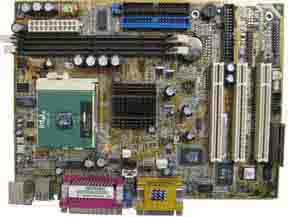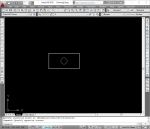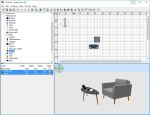- Home
- computer software
- computer motherboard
A guide to choose computer motherboard

Are you thinking to buy or upgrade your computer motherboard, but confused by varieties of boards available on the market? Yes, it is difficult to choose unless you know the factors that will lead you to the best system board.
Read this article which helps you choose the system board you want.
But first …
What is motherboard?
When you open your computer for the first time, you will soon get a flat board screwed on the inside part of the case. That is what we call computer motherboard - the most important of all other parts.
You see that every part in the case is connected to this board directly or indirectly. As you observe thoroughly, you will soon realize that no part is left out without connecting to the board.
To define, computer motherboard is the main electronic circuitry of a computer. It holds all parts together. It is the chief of all parts, without it there is no called ‘computer’.
Often it is referred as “System Board”, “Main board”, “planer”
Its function
The main function of a system board is providing a way so that all the parts work together. It allows various components of a computer to communicate each other.
Types of computer motherboard
Generally, board types are determined by two major factors:
- Form factor
- Type of processor they designed for
Form factor refers the physical dimensions of a system board. Not all motherboards fit into the same case. Knowing your form factor will let you know what type of case you are to buy.
Some of the system board form factors include: -
- ATX (the most common board found in most systems)
- Micro ATX
- NLX
- WTX (found in workstations and expensive)
- BTX
Among the types of boards, ATX and Micro ATX are the most common designs we often see in the current computers. Expandability, upgradability, low cost makes ATX boards accepted in the current systems trend.
Computer motherboard can be also classified based on the processor socket type it takes. Not all boards are compatible for all the CPUs. It is CPU specific. Before buying, you need to make sure that a motherboard supports the CPU you choose.
The following are among the popular main board types based on CPU socket types:
- Socket A – for AMD and Durons processors
- Socket 370 - for Intel Pentium III and Celerons
- Socket 378 – for Pentium 4 processors
- Socket T
How do you know whether your board is ATX or not? You surely can know by observing two things on your board.
- The PCI slots are directly fitted on the system board
- You see double high connector area on the back panel of your computer (the above image is a typical micro ATX main board)
How do computer parts connect each other?
All the components in a computer connect each other via system buses. A bus is a common pathway used to transfer data between the independent components. Data travels across these buses at different speeds.
Commonly, there are two types of buses
- Processor bus
- Input/Output bus (I/O bus)
The processor bus, also called Front Side Bus (FSB) connects CPU with cache or memory. The connection is facilitated by the chipset called North bridge. FSB is the highest-speed bus in a computer system.
The other type of bus is input/output bus. This bus embraces more than two types though it operates at the lowest speed than FSB. The AGP (accelerated graphics port) and the PCI (Peripheral Component Interconnect) bus types are among I/O bus.


